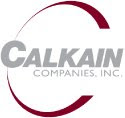
It has been recently
reported that the US apartment market may have reached bottom and be poised for a rebound. Apartment vacancy rates have stopped rising and rents even showed a modest increase in the first quarter. As life is pumped back into this market, 1031 exchanges could subsequently rise. Apartment investors heavily utilized 1031 exchanges to move from active to passive assets (such as net leases) in the past. Will this trend repeat?
To gain insight, we have solicited the help of James Brennan Esq., LL.M., Managing Director and Corporate Counsel of Exchange Solutions Group, one of the foremost experts of 1031 exchanges.
1. With the possible return to health of the U.S. apartment market, do you expect to see increased 1031 tax exchange action?The Baby Boom generation flocked to real estate as an investment class, particularly multifamily. With Baby Boom private investors aging and looking to make life decisions regarding retirement, relocation, and estate planning, and all of those activities are distinguishable from the active process of “adding value” to apartment complexes through sweat equity and property management. Many of those B and C investors are looking to get out of active management. After living through this cycle, they want out more now than ever.
2. What makes apartment owners keen to move from an active to passive asset?Passive triple net leases are net insurance, net utilities, and net taxes to the tenant. Apartment owners that have built a net worth over $5 million are looking to create annuity-like income for their heirs who often are not in the real estate business. These family patriarchs and matriarchs are not looking to burden their heirs who often are busy professionals in metropolitan areas with decisions regarding leasing up property or fixing the roof. Triple net leases provide credit-rated tenants with predictable cashflow.
3. How popular are net leases for those exchanging out of apartments?Net leases are not only used by multifamily baby-boomers but also multifamily “financial engineers”. While multifamily financing is often favorable from agencies like Fannie and Freddie many borrowers are in troubled financial shape with distressed assets. These assets often don’t pass muster to be financed or refinanced with agency debt. These investors can 1031 exchange either with low equity or after conducting a deed-in-lieu 1031 into a net lease. Once in the net lease asset, the equity can be unlocked fairly easily through either credit-tenant-lease paydown readvance or through a standard refinance. These strategies allow multifamily borrowers to get an asset banks trust more with a credit rating.
4. What is the psychographic profile of a typical investor who executes this strategy?Apartment developers are often drivers or family stewards. These decision-makers have built wealth from the ground up often not in a traditional white-collar methodology. These hard-driving decision-makers have provided for their family, and also probably have setup life insurance trusts to allow for estate planning liquidity. Triple net leases go well with this concept of transitioning wealth to the next generation without many opportunities for losing value by the heirs. The family stewards have built wealth and are now simply trying to preserve it.
5. Are there any aspects of this strategy conducive to estate planning techniques?In an effort to defer capital gains while family stewards are still living the patriarch or matriarch often engages in a like-kind exchange to transition between apartment assets and net lease assets. In a like-kind exchange you can trade into multiple replacement properties. Therefore, if you have three children and you sold your apartment complex for $15 million, you can buy three $5 million dollar net lease assets that produce income that can be divided up amongst the heirs. This avoids management by the one heir that may be more real estate savvy.
Equally as important, the credit-rated aspect of net leases allows trust officers and advisors to sleep at night knowing that they made defendable decisions on behalf of the trust. Therefore, if a real estate trust officer is transitioning from apartment assets, net lease income streams are fiduciary friendly.
 Walgreens recently closed the purchase of Duane Reade, a deal which included “all 258 Duane Reade stores in the New York City metropolitan area, as well as Duane Reade’s corporate office at 440 Ninth Ave. and two distribution centers”. The transaction was all-cash and involved the absorption of $457 million in debt. This bolsters Walgreens already impressive presence in the drugstore/pharmacy market, adding a prominent urban chain and presenting new opportunities for net lease investors.
Walgreens recently closed the purchase of Duane Reade, a deal which included “all 258 Duane Reade stores in the New York City metropolitan area, as well as Duane Reade’s corporate office at 440 Ninth Ave. and two distribution centers”. The transaction was all-cash and involved the absorption of $457 million in debt. This bolsters Walgreens already impressive presence in the drugstore/pharmacy market, adding a prominent urban chain and presenting new opportunities for net lease investors.






